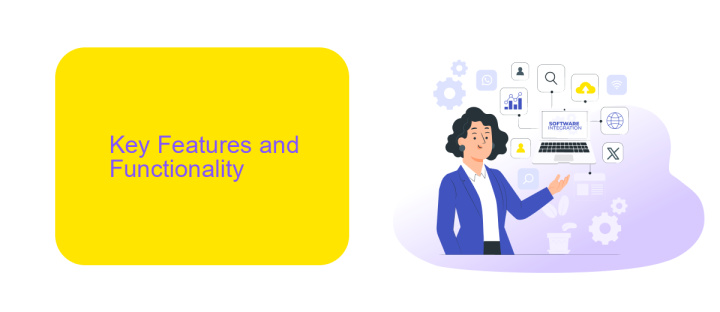MuleSoft on-premise Vs Cloud
As businesses increasingly adopt digital transformation strategies, choosing the right integration platform becomes crucial. MuleSoft offers both on-premise and cloud-based solutions, each with distinct advantages. This article explores the key differences between MuleSoft on-premise and cloud options, helping organizations make informed decisions to optimize their integration processes and achieve operational efficiency.
Introduction
MuleSoft, a leading platform for building application networks, offers two primary deployment options: on-premise and cloud. Choosing the right deployment model is crucial for businesses aiming to optimize their integration strategies. Understanding the differences between these two options can help organizations make informed decisions that align with their specific needs and goals.
- On-Premise: Offers greater control over data and infrastructure, ideal for organizations with stringent security requirements.
- Cloud: Provides scalability, flexibility, and reduced maintenance, making it suitable for businesses looking to leverage modern cloud technologies.
Additionally, tools like ApiX-Drive can further streamline the integration process by automating data transfers between various applications, regardless of the chosen deployment model. By leveraging such services, businesses can enhance their operational efficiency and ensure seamless connectivity across their software ecosystem.
Key Features and Functionality

MuleSoft on-premise and cloud solutions offer distinct key features and functionalities tailored to different business needs. On-premise deployments provide enhanced control over data security and compliance, making them ideal for industries with stringent regulatory requirements. They allow for extensive customization and integration with legacy systems, ensuring seamless operations within existing IT infrastructure. Additionally, on-premise solutions often deliver lower latency and higher performance, crucial for real-time data processing and mission-critical applications.
Conversely, MuleSoft cloud solutions emphasize scalability and flexibility, enabling businesses to quickly adapt to changing demands and scale resources as needed. Cloud deployments reduce the burden of hardware maintenance and upgrades, offering automatic updates and high availability. Integration services like ApiX-Drive can further enhance MuleSoft's cloud capabilities by simplifying the process of connecting various applications and automating workflows. This allows businesses to streamline operations, improve efficiency, and focus on core activities without worrying about the underlying infrastructure.
Deployment Considerations

When deciding between MuleSoft on-premise and cloud deployment, several factors need to be considered to ensure optimal performance and scalability. The choice largely depends on the specific requirements of your organization, including security, cost, and flexibility.
- Security: On-premise deployments offer greater control over security measures, making them suitable for organizations with stringent data protection needs. Cloud deployments, while secure, rely on the provider's security protocols.
- Cost: On-premise solutions often involve higher upfront costs for hardware and maintenance. Cloud-based deployments, on the other hand, operate on a subscription model, which can be more cost-effective in the long run.
- Scalability: Cloud deployments provide greater scalability, allowing you to easily adjust resources based on demand. On-premise solutions may require significant investment to scale up.
- Integration: Tools like ApiX-Drive can simplify the integration process, whether you opt for on-premise or cloud. ApiX-Drive offers seamless integration capabilities that can bridge various applications and services, enhancing overall efficiency.
Ultimately, the decision between MuleSoft on-premise and cloud deployment should align with your organization's strategic goals and operational requirements. Consider the trade-offs in security, cost, scalability, and integration to make an informed choice.
Cost and Licensing

When considering MuleSoft on-premise versus cloud deployment, cost and licensing are critical factors. On-premise solutions often require a significant upfront investment in hardware, software licenses, and IT infrastructure. Additionally, ongoing maintenance and upgrades can add to the total cost of ownership.
In contrast, cloud-based MuleSoft solutions typically operate on a subscription model, which can be more cost-effective for many organizations. This model includes regular updates, maintenance, and scalability options, reducing the need for extensive in-house IT resources.
- Initial Investment: Higher for on-premise, lower for cloud.
- Maintenance: On-premise requires dedicated IT staff, while cloud includes this in the subscription.
- Scalability: Cloud solutions offer better scalability without additional hardware costs.
- Licensing: On-premise may have complex licensing, whereas cloud uses a simpler subscription model.
Moreover, services like ApiX-Drive can further streamline integration processes, reducing the need for extensive manual configurations and thereby cutting down on associated costs. Regardless of the deployment model chosen, understanding the cost implications is essential for making an informed decision.
Conclusion
In conclusion, the choice between MuleSoft on-premise and cloud solutions largely depends on the specific needs and constraints of your organization. On-premise solutions offer greater control and security, which can be crucial for industries with strict regulatory requirements. However, they also come with higher maintenance costs and require significant IT resources to manage and update the infrastructure.
On the other hand, cloud-based solutions provide scalability, flexibility, and reduced operational overhead, making them ideal for businesses looking to grow rapidly without investing heavily in physical infrastructure. Tools like ApiX-Drive can further enhance the efficiency of cloud-based integrations by automating and simplifying data workflows, allowing organizations to focus on core business activities. Ultimately, the decision should be guided by a careful evaluation of your organization's specific integration needs, budget, and long-term strategic goals.
- Automate the work of an online store or landing
- Empower through integration
- Don't spend money on programmers and integrators
- Save time by automating routine tasks
FAQ
What is the main difference between MuleSoft on-premise and cloud deployment?
What are the advantages of using MuleSoft on-premise?
What are the benefits of deploying MuleSoft in the cloud?
Can MuleSoft on-premise and cloud deployments be integrated?
What should I consider when choosing between on-premise and cloud deployment for MuleSoft?
Do you want to achieve your goals in business, career and life faster and better? Do it with ApiX-Drive – a tool that will remove a significant part of the routine from workflows and free up additional time to achieve your goals. Test the capabilities of Apix-Drive for free – see for yourself the effectiveness of the tool.


